10 Must-Have Assistive Kitchen Gadgets That Make Life Easier for Seniors
Introduction
Cooking can be a source of joy, but for seniors, it can also come with challenges. Arthritis, reduced grip strength, and mobility issues can turn simple kitchen tasks into difficult or even dangerous ones. That’s where Assistive Kitchen Gadgets come in. These tools are designed to make meal prep easier, safer, and more enjoyable, allowing seniors to maintain their independence in the kitchen. From electric can openers to non-slip cutting boards, the right gadgets can reduce strain, prevent accidents, and keep cooking fun. Whether you’re caring for an elderly parent or looking for ways to make your own kitchen experience smoother, these 10 must-have tools can make all the difference.
Cut-Resistant Gloves
Cooking should be enjoyable, not a source of stress. But for seniors, especially those dealing with arthritis or reduced hand strength, the simple act of chopping vegetables can feel like a risky task. That’s where cut-resistant gloves come in.
Why They’re Useful
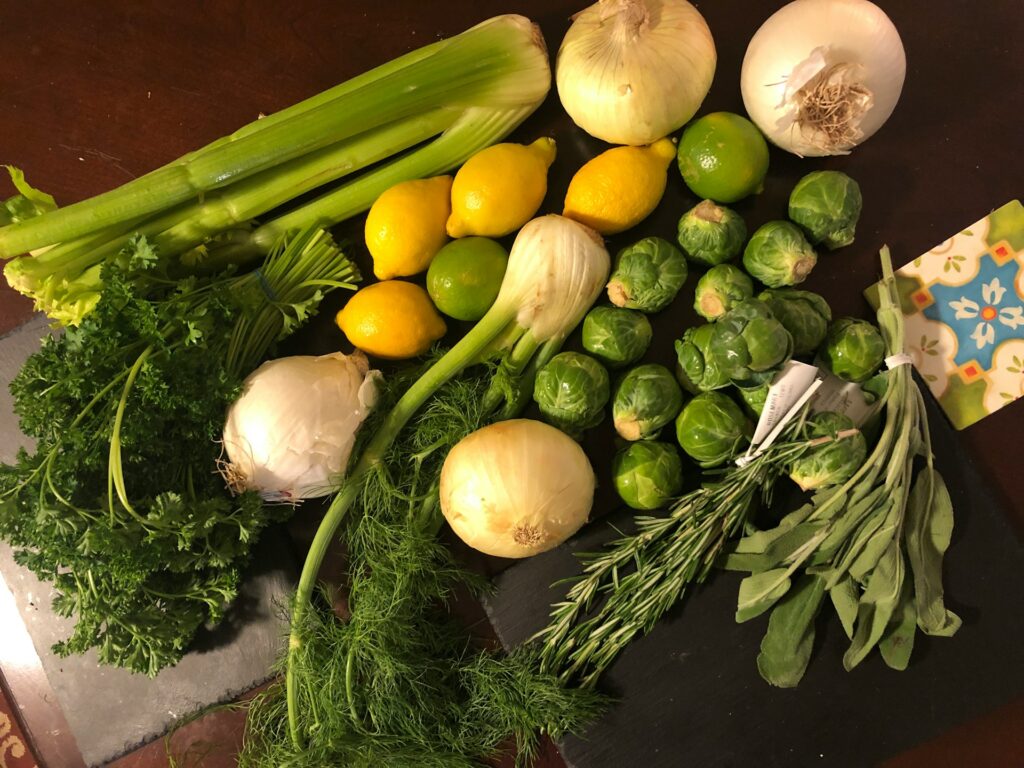
- Protect hands from cuts and nicks while slicing, dicing, or grating.
- Give seniors more confidence in the kitchen by reducing the fear of accidents.
- Great for those with shaky hands or reduced dexterity.
What to Look For
Not all gloves are created equal. Here’s what matters:
- Material – Look for high-grade, food-safe cut-resistant fabric like Kevlar or stainless-steel mesh.
- Fit – A snug but flexible fit ensures comfort and proper control.
- Washability – Machine-washable gloves make cleanup easy.
Best Use Cases
- Chopping veggies or meats
- Using a mandoline slicer
- Grating cheese
- Handling sharp knives or peelers
These gloves add a layer of safety that helps seniors keep cooking without the fear of accidental injuries.
Electric Can and Jar Openers
Twisting, gripping, and pulling—opening cans and jars isn’t as easy as it used to be. Arthritis, joint pain, and reduced hand strength can turn a simple task into a frustrating struggle. That’s why electric can and jar openers are must-have assistive kitchen gadgets for seniors.
Why They’re Helpful
- Eliminate the need for twisting and pulling. No more wrestling with stubborn lids.
- Prevent injuries. Sharp can lids and slippery glass jars can be dangerous, especially if grip strength isn’t what it used to be.
- Save time and effort. With the press of a button, cans and jars open effortlessly.
What to Look For
When picking out the right gadget, consider these key features:
- One-touch operation – The simpler, the better.
- Adjustable grip size – Some openers can handle everything from small pickle jars to large spaghetti sauce jars.
- Battery or plug-in power – Battery-operated models offer more flexibility, while plug-in versions provide steady power.
Best Use Cases
- Opening canned soups, vegetables, or pet food
- Loosening stuck lids on jars of jam, peanut butter, or pickles
- Avoiding sharp edges when opening cans
For seniors who still love cooking but struggle with opening jars and cans, this little gadget can be a real game-changer.
Non-Slip Safety Cutting Boards
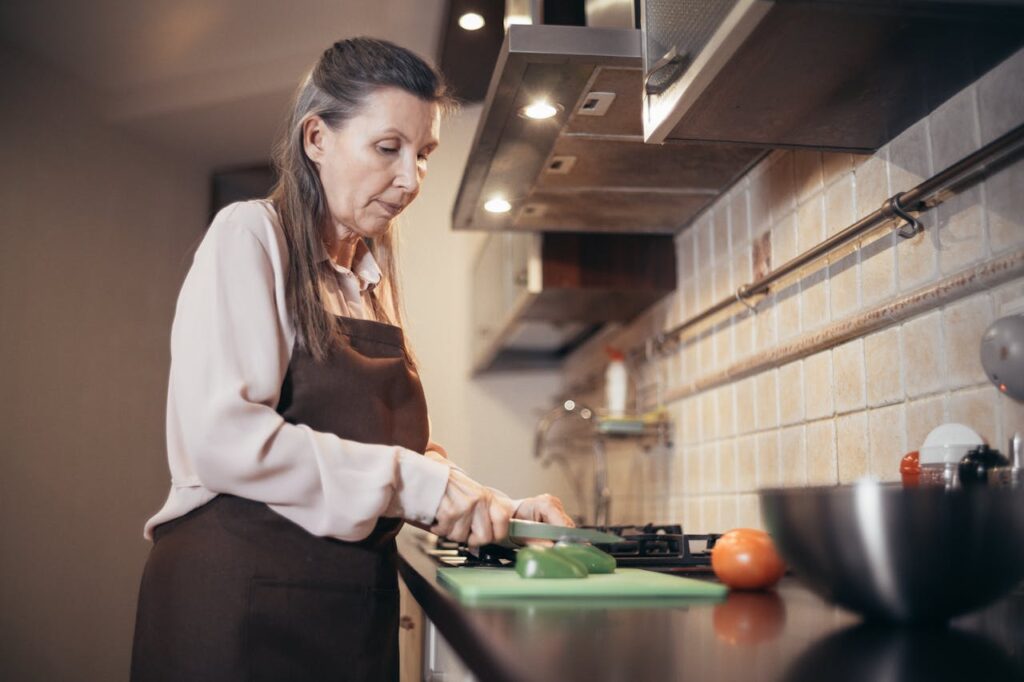
A cutting board that slides around the counter while slicing vegetables is a recipe for disaster, especially for seniors who may not have the hand strength to hold it steady. Non-slip safety cutting boards make food prep safer and easier by staying firmly in place.
Why They’re a Must-Have
- Prevents slips and accidents. A stable surface means less chance of knives slipping.
- Requires less grip strength. No need to press down hard to keep the board in place.
- Often designed with extra safety features. Some have raised edges to keep food from rolling off or grooves to catch juices.
What to Look For
A good safety cutting board should have:
- Non-slip rubber grips – Silicone or rubber feet keep it anchored.
- Grooved edges – Helps contain liquid when slicing juicy fruits or meats.
- High-contrast colors – Useful for seniors with vision impairments, making it easier to see what they’re cutting.
Best Use Cases
- Chopping vegetables and meats safely
- Preparing ingredients without worrying about the board sliding
- Keeping juices contained when cutting fruits like watermelon or tomatoes
A steady cutting surface makes a world of difference, especially for seniors with shaky hands or arthritis. It’s a simple upgrade that adds a lot of safety to everyday meal prep.
Rocker Knives
Standard kitchen knives require a firm grip and controlled force, which can be tough for seniors dealing with arthritis, tremors, or limited hand mobility. Rocker knives solve this problem with a curved blade that cuts using a gentle rocking motion instead of a sawing action.
Why They Make Cooking Easier
- Require less hand strength. The rocking motion reduces strain on the wrist and fingers.
- Provide better control. The design keeps the knife stable, lowering the risk of slips.
- Can be used one-handed. Perfect for seniors who have weakness or mobility issues in one hand.
What to Look For
To get the best rocker knife, check for:
- A wide, ergonomic handle – Easier to grip and hold steady.
- A sharp, curved blade – The sharper the knife, the less force needed.
- A protective sheath – Helps with safe storage when not in use.
Best Use Cases
- Slicing meats, bread, and vegetables
- Cutting sandwiches and fruit with minimal effort
- Making meal prep more accessible for those with limited hand movement
A rocker knife is a small but powerful upgrade that makes cutting tasks easier, safer, and more enjoyable.
Automatic Jar Openers
Struggling with a tight jar lid is frustrating for anyone, but for seniors with arthritis or weak grip strength, it can make cooking feel impossible. Automatic jar openers take the struggle out of the equation by gripping and twisting the lid with the push of a button.

Why They’re a Lifesaver
- No more struggling with tight lids. The device does all the work.
- Prevents wrist strain. No need for twisting, gripping, or applying force.
- Works on various jar sizes. Adjustable grips fit everything from small spice jars to large pickle jars.
What to Look For
A good automatic jar opener should have:
- One-touch operation – The simpler, the better.
- Adjustable grip size – Must handle different lid diameters.
- Battery-powered vs. plug-in – Battery models offer portability, while plug-in options don’t require replacements.
Best Use Cases
- Opening sauce jars, peanut butter, or jam
- Loosening lids that are vacuum-sealed or stuck
- Reducing frustration and increasing kitchen independence
This is one of those assistive kitchen gadgets that feels like a luxury at first—until you realize just how much easier it makes daily tasks.
Easy-Pour Electric Kettles
Lifting and tilting a heavy, steaming kettle can be risky for seniors, especially those with shaky hands, arthritis, or reduced arm strength. Easy-pour electric kettles eliminate that risk by offering a safer, more ergonomic design for boiling and pouring water.
Why They’re a Safer Choice
- Eliminates heavy lifting. Some models come with a tilting base, so there’s no need to lift at all.
- Prevents burns. Controlled pouring means less chance of spills and accidental contact with hot surfaces.
- Heats water quickly. No need to stand over a stovetop waiting for water to boil.
What to Look For
A great easy-pour electric kettle should have:
- A lightweight design – Seniors shouldn’t have to struggle with a bulky appliance.
- A wide, ergonomic handle – Makes gripping easier and more secure.
- Auto shut-off and boil-dry protection – Adds an extra layer of safety.
Best Use Cases
- Making tea, coffee, or instant soup
- Heating water for oatmeal or other quick meals
- Reducing the risk of burns from traditional kettles
This small switch makes handling hot liquids much safer, allowing seniors to continue enjoying their daily routines with confidence.
Clip-On Strainers
Draining pasta or vegetables can be tricky, especially when handling a heavy pot full of boiling water. Pouring hot liquids while holding a separate strainer requires grip strength, coordination, and balance—things that can become more difficult with age. Clip-on strainers solve this problem by attaching directly to the pot, allowing seniors to drain liquids safely and effortlessly.
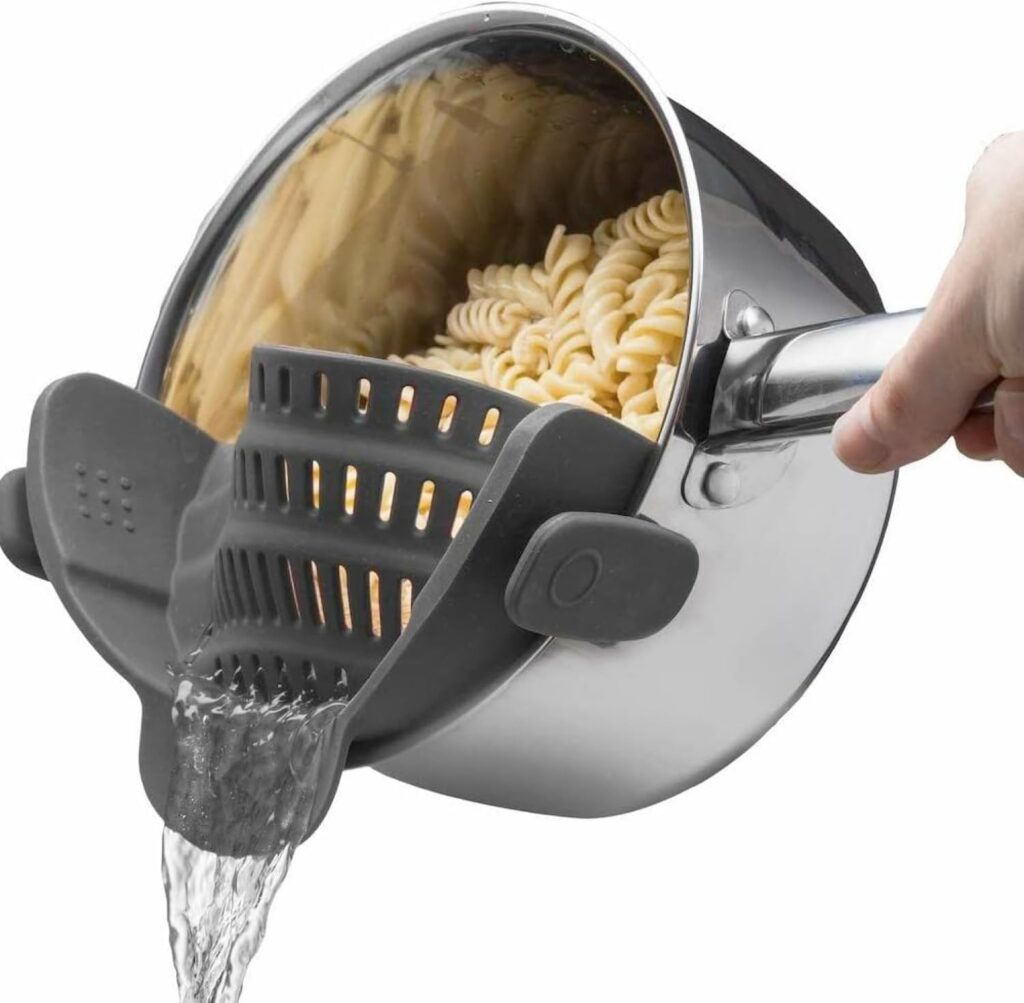
Why They Make Cooking Safer
- Reduce the risk of burns. No need to hold a separate strainer while dealing with hot steam and water.
- Make one-handed straining possible. Ideal for those with limited strength or mobility in one hand.
- Eliminate the need to lift heavy pots. The strainer stays in place while water drains out.
What to Look For
When choosing a clip-on strainer, look for:
- A secure grip – Silicone or stainless steel clips hold it firmly in place.
- Heat-resistant materials – Avoid plastics that could melt under high temperatures.
- Universal fit – Some models are adjustable to work with different pot sizes.
Best Use Cases
- Draining pasta, vegetables, or boiled eggs
- Pouring out liquid without using a separate colander
- Preventing spills and burns from heavy pots
This simple but effective gadget makes a big difference in the kitchen by reducing strain and making meal prep much easier.
Vegetable Choppers
Chopping vegetables with a knife can be time-consuming and risky, especially for seniors with shaky hands, arthritis, or reduced grip strength. Vegetable choppers provide a safer, easier way to prep ingredients without needing to handle sharp blades.
Why They’re a Game-Changer
- Reduce the risk of cuts. No need to use a knife for every small chopping task.
- Make food prep quicker. With a single press or push, vegetables are evenly chopped.
- Require minimal hand strength. Most choppers use a simple push-down or pull mechanism that’s easier than gripping a knife.
What to Look For
When picking a vegetable chopper, consider:
- Manual vs. electric models – Manual choppers require a bit of pressure, while electric ones do all the work.
- Blade options – Some models come with different blades for dicing, slicing, or julienning.
- Easy cleaning – Look for dishwasher-safe parts to simplify cleanup.
Best Use Cases
- Chopping onions, carrots, and bell peppers without using a knife
- Prepping salads or stir-fry ingredients with minimal effort
- Making meal prep safer and faster
For seniors who love to cook but struggle with knives, a vegetable chopper is one of the best assistive kitchen gadgets to have on hand.
Reacher/Grabber Tools
Bending down to pick something up or reaching for an item on a high shelf can be risky for seniors. Reacher/grabber tools help prevent falls and strain by allowing seniors to grab items without stretching, bending, or climbing onto stools.
Why They’re Essential
- Prevent falls. No need to climb on chairs or bend over too far.
- Reduce strain on joints. Great for seniors with arthritis or back problems.
- Work for both lightweight and heavier objects. Many models can handle everything from a dropped spoon to a can of soup.
What to Look For
To get the most out of a grabber tool, look for:
- A strong grip mechanism – Rubber-tipped claws help secure items.
- Lightweight but sturdy design – Needs to be easy to lift but strong enough to hold objects.
- Rotating head – Adds extra flexibility for grabbing things at different angles.
Best Use Cases
- Reaching for food in high cabinets
- Picking up dropped items without bending over
- Grabbing hard-to-reach objects safely
This is one of the simplest yet most effective assistive kitchen gadgets for seniors, helping them stay independent without unnecessary strain.
Safety Induction Cooktops
Traditional stovetops can be dangerous for seniors. Open flames, hot burners, and accidental forgetting to turn off the heat can lead to serious risks. Safety induction cooktops provide a safer way to cook by using electromagnetic fields to heat only the cookware—keeping the cooking surface itself cool to the touch.
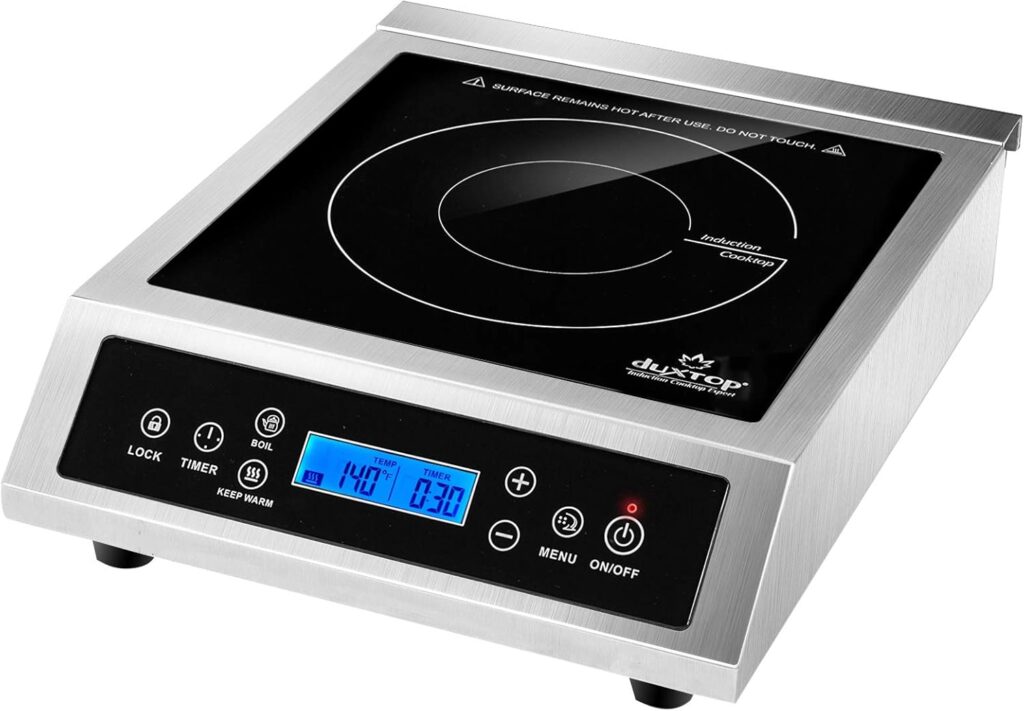
Why They’re a Safer Choice
- Reduce burn risks. The surface stays cool, even when the cookware is hot.
- Lower fire hazards. No open flames or exposed heating elements.
- Feature automatic shut-offs. Many models turn off automatically when cookware is removed.
What to Look For
When choosing an induction cooktop, consider:
- Auto shut-off timers – Great for forgetful moments.
- Temperature controls – Some models offer precise adjustments for easier cooking.
- Lightweight, portable designs – Can be used on countertops instead of traditional stoves.
Best Use Cases
- Cooking without worrying about burns or fires
- Making meals easier with precise temperature control
- Reducing kitchen hazards for seniors with memory issues
For seniors who still love to cook but want a safer setup, an induction cooktop is one of the best upgrades to consider.
FAQ: Assistive Kitchen Gadgets for Seniors
1. What are the best assistive kitchen gadgets for seniors with arthritis?
Seniors with arthritis benefit most from gadgets that reduce strain on the hands and wrists. Electric can and jar openers, rocker knives, vegetable choppers, and easy-pour electric kettles are great options. These tools minimize the need for twisting, gripping, or applying force, making meal prep easier and safer.
2. How do assistive kitchen gadgets improve safety for seniors?
Many kitchen accidents happen due to slips, burns, or difficulty handling sharp tools. Non-slip cutting boards, cut-resistant gloves, clip-on strainers, and safety induction cooktops help reduce these risks. They provide stability, prevent burns, and make kitchen tasks more manageable for seniors with limited mobility or grip strength.
3. Are there kitchen gadgets that help seniors with memory issues?
Yes, safety induction cooktops with automatic shut-off features are excellent for seniors who may forget to turn off appliances. Electric kettles with auto shut-off and timers also prevent overheating hazards. These tools offer peace of mind for both seniors and their caregivers.
4. How can I make cooking easier for an elderly parent who struggles with grip strength?
Look for kitchen gadgets designed to eliminate the need for strong gripping and twisting. Electric can and jar openers, reacher/grabber tools, and rocker knives are all designed to make cooking easier without requiring a firm grip.
5. Where can I buy assistive kitchen gadgets for seniors?
Most of these gadgets can be found online through retailers like Amazon, Walmart, and specialty senior living stores. Many home goods stores also carry ergonomic kitchen tools designed for easier use. Reading reviews and checking product features can help you find the best options for your loved one’s needs.

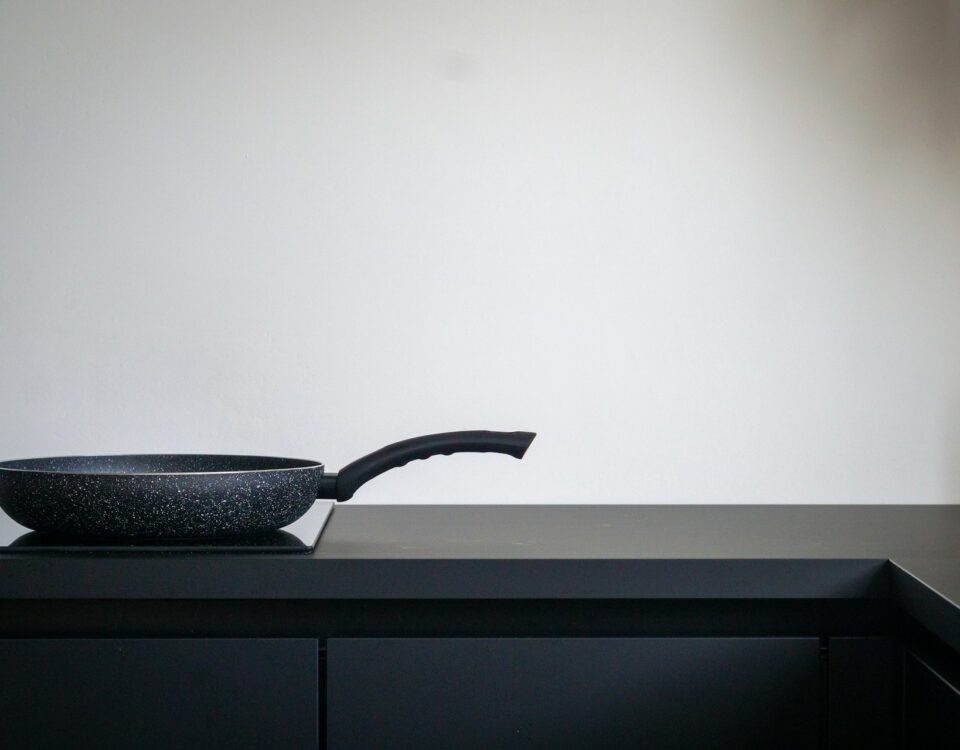



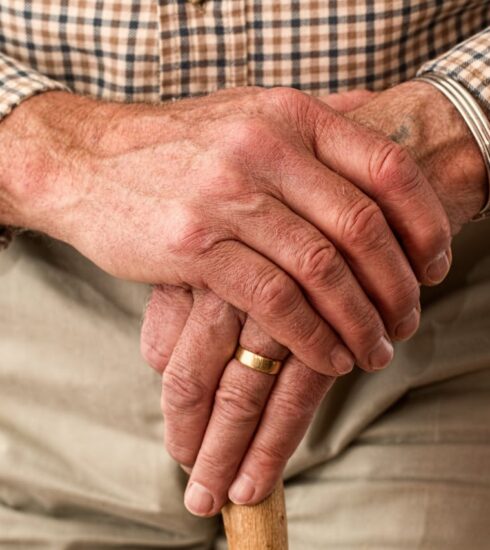
2 Comments
7 Senior Kitchen Safety Modifications for Safer Cooking at Home - Eldernook
3 weeks ago[…] or struggling with heavy cookware can turn cooking into a frustrating and even dangerous task. Swapping out old kitchen tools for safer, more senior-friendly options makes cooking easier and reduces the risk of burns, cuts, and […]
Benefits of Home Monitoring Systems for Seniors - Eldernook
3 weeks ago[…] Connected kitchen appliances can track if meals are being prepared regularly. […]